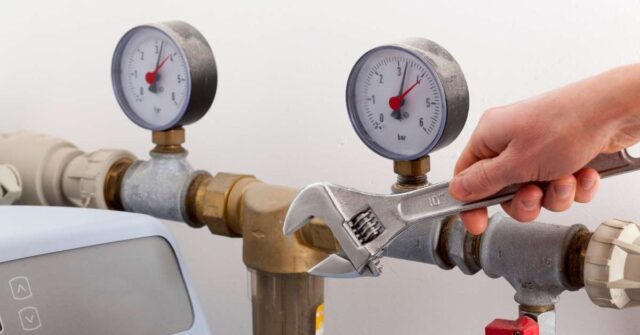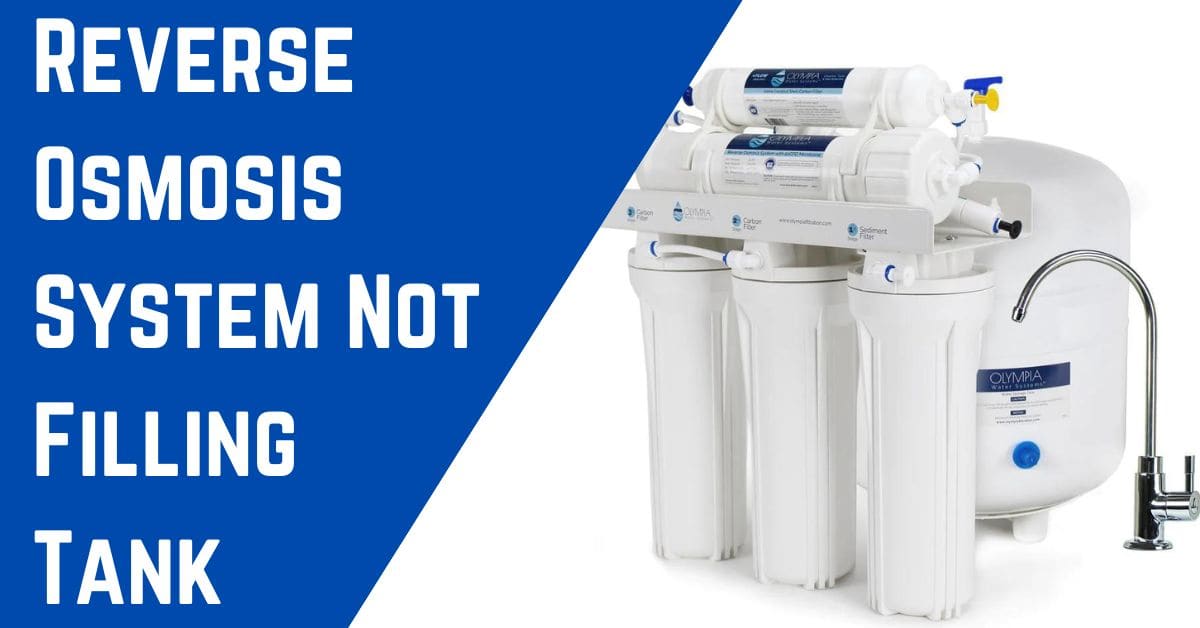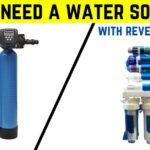The RO system is a well-known system for water treatment in our houses.
If your reverse osmosis system not filling tank, there are a few things you can check to try to fix the issue.
There could be various causes that we explain in this article.
Why Is My Reverse Osmosis System Tank Not Filling Up?
There can be a few different reasons for your reverse osmosis:
1. Check the Pre-Filter
If your Reverse Osmosis tank isn’t filling up, you should check the pre-filter system first.
Before reaching your reverse osmosis membrane, the pre-filter catches all the sediment and other contaminants.
Over time, the pre-filter can become clogged with sediment and other materials, reducing gallons of water flow and causing the slow RO.
2. Check the Valves
Another possible reason is the valves are not set correctly. You need to check two valves: the inlet and outlet valves.
The inlet valve controls the water that goes into the RO unit. In contrast, the outlet valve controls the water that comes out of the unit.
If either valve is not set correctly, it can affect the performance.
3. Check for Leaks
There is a leak somewhere in your RO system. First, ensure that all the fittings are tight to check for leaks.
Then, check the hoses and connections for any leaks. If you find a leak, it must be repaired before your RO system works properly.
4. Check the Membrane
If your pre-filter and valves are all working correctly, the next thing to check is the membrane.
The membrane is what removes the contaminants from the water.
Over time, the reverse osmosis membrane can become clogged with sediment and other materials, which can cause slow flow.
If you think that the membrane might be the problem, it’s best to contact a professional for help.
5. Check the Storage Tank
The last thing to check is the tank. The water goes into the tank after being filtered by the RO system.
If the tank is not correctly sealed, air can enter and prevent the tank from filling up.
If you’ve checked all these system things and your Reverse Osmosis tank still isn’t filling up, it’s best to contact a professional for help.
What Is The Lifespan Of A Ro Pressure Tank?
An RO tank can last for many years, but it is essential to maintain it properly.
The lifespan of an RO tank can be affected by several factors, such as the quality of the materials used in its construction, the way it is used, and the amount of care taken to maintain it.
With proper care, tank pressure can provide years of service.
The lifespan of a Ro pressure tank can also be affected by how often it is used.
If a tank is used only occasionally, it will not need to be replaced as often as used more frequently.
It is also important to note that the lifespan of a Ro pressure tank can vary depending on the manufacturer.
Some manufacturers may offer a more extended warranty than others, so checking with the manufacturer before purchasing is essential.
Additionally, some manufacturers may use different materials in their tanks, affecting their lifespan.
When choosing pounds of a pressure tank, selecting one made from high-quality materials that will last many years is essential.
How to Increase Water Pressure in Ro System?
If you are wondering how to increase sufficient water pressure in an RO system, there are a few things that you can do.
First, check the manual with your unit to see if anything needs to be adjusted.
1. Check for leaks
Leaks are among the most common reasons for low water pressure in an RO system. Even a small leak can cause a significant drop in water pressure.
So, the first thing you should do is check all of the connections and hoses for any signs of leaks.
2. Clean the filter
Another common reason for low water pressure is a dirty filter. If your filtration unit is clogged, it will restrict the water flow and cause the pressure to drop.
So, be sure to clean or replace your filter housing as needed.
3. Bleed the air out of the system
The next cause of low incoming water pressure is air in the system. When there is air in RO, it can block the water flow and cause the pressure to drop.
To bleed the air out of your system, open the air bladder valve and allow the city water to flow until the pressure is normal.
4. Adjust the pressure regulator

If you have an adjustable pressure regulator, you may be able to increase the soapy water pressure by simply turning up the pressure.
However, be careful not to turn it up too high, as this could damage your system.
5. Call a professional
If you have tried all of the above steps and still have problems with low water pressure, you may need to call a professional for help.
How to Determine the Water Flow Rate of Your Reverse Osmosis System?
It is essential to determine the water flow rate of your reverse osmosis system before you install it.
It will help ensure that the system will work properly and efficiently.
There are two ways to determine the water flow rate.
Flow Meter:- A Flow Meter is a device that measures the amount of water flowing through a pipe.
Pressure Gauge:- A Pressure Gauge is a device that measures the pressure of the water inside the pressurized holding tank.
Once you have determined the water flow rate, you can select the storage tank size you will need.
The tank should be large enough to hold all the water the system produces.
It is also essential to have a pre-filter. Before entering the system, the pre-filter will remove any sediment or other particles from the water.
Calculating the production rate is the last step in determining the water flow position of your reverse osmosis unit.
The production rate is the amount of water the system can produce daily.
To calculate the production rate, you will need to know the following information:
- The water pressure: This can be measured with a Pressure Gauge.
- Temperature: This can be measured with a Thermometer.
- The TDS (Total Dissolved Solids): This can be measured with a TDS Meter.
- The system you are using: This information can be found in the manufacturer’s specifications.
With this information, you can then use the following formula to calculate the production rate:
Production Rate = (Water Pressure x Water Temperature x TDS) / Reverse Osmosis System Efficiency
Why Do You Have A Leak Detector Shut-Off Valve?
Suppose you live in an area prone to flooding or other natural disasters. In that case, you know the importance of having a way to shut off your water supply in the event of a leak.
But did you know that you can also install a leak detector shut-off valve?
This type of valve automatically shuts off your plumbing supply if a leak is detected. This can help prevent significant water damage to your home.
If you’re unsure if you have a leak detector shut-off valve, the best way to find out is to contact your local water utility company.
They should be able to tell you whether or not your home has this type of valve installed. If you don’t have one, they may also be able to install one for you.
In the meantime, there are a few things you can do to help prevent water damage in your home:
- Check all pipes and fixtures regularly for leaks
- Install water drip pans under all appliances that use water, such as your washing machine or dishwasher
- Never leave a running air gap faucet unattended
- Repair any leaks
You can help protect your home from water damage by taking these precautions.
And if you do have a leak detector shut-off valve, you’ll have peace of mind knowing that your home is better protected against water damage.
Reverse Osmosis Tank Bladder Rupture
One of the most essential components of an RO system is the water storage tank. The tank holds a reserve of purified water and is pressurized to help force water through the system.
Most RO tanks are made with a bladder that holds the water.
The bladder is a rubber or plastic membrane housing that expands as it fills with water. Over time, the bladder can break down and rupture.
It can cause a loss of water pressure and purification and water leaks.
If you suspect your RO tank bladder has ruptured, replacing it as soon as possible is essential.
A ruptured bladder can cause costly repairs and catastrophic damage to your RO system. Contact a qualified professional today if you need RO tank repair or replacement.
Further helpful tips are explained in this video:
Conclusion
In conclusion, if your reverse osmosis system not filling tank, it is most likely due to a loose or damaged connection, a clogged filter, or a problem with the booster pump.
By troubleshooting the issue and following the steps outlined above, you should be able to fix the problem and get your system up and running again.
I hope this article is beneficial to you. Thank you for reading!






